QuestionWe recently moved our red foot tortoise to a bigger glass tank (75 gal). He is approx. 2 years old, about 6-7 inches. I began to notice he was not eating as well and after some research believed it was because the humidity level had changed with the new enclosure. Since then I have been monitoring the humidity. He is eating better but not as much as he used to, he is extremely active and alert, his coloring is good, but he does not seem to be having normal bowel movements. I have soaked him in warm water regularly as that typically would 'clean him out', but he is only passing very small amounts. He is showing no visible signs of distress, but i'm worried.
We don't have a ton of money so I am hoping to avoid a trip to the vet. Is there anything that will tell me for sure that he is having problems? Is there anything else I can do to help things along?
We are feeding him a variety of foods: Collard greens, dandelion greens, spring mix, squash, apples, strawberries, shrimp occasionally, mushrooms, peppers, tomatoes, etc. We also have a dry mix from the pet store - "RepCal maintenance formula" He is in a glass enclosure with coconut wood chips. I spray the wood chips until drenched several times a day. He has 100watt UVB lights #day/night# - light bulbs are 'All living things' and lamp is 'ZOO Med'. He has a big soaking dish and we take him out regularly for exercise and to soak in the tub.
I appreciate any advice you can offer.
Thanks
AnswerHi Laurie,
You need to make some changes to your tortoise's environment. First, get him out of the tank. Tortoises don't do well in tanks for a number of reasons, and are better off in enclosures that are open, roomy, and with solid sides that don't absorb heat the way glass does. You can build a tortoise table, use an old bookcase turned on its back, a stock tank (the galvanized ones don't seem to absorb much heat, but they also make poly tanks), etc. Just think big--redfoots can grow to 12" and need a lot of room for exercise. They also do very well in outside pens during the warmer months, and if you provide plants, logs, bark, etc. they can do some hunting on their own.
Get rid of the wood chips; they're not that good at holding moisture, and since redfoots are a tropical species, they need plenty of moisture. Use a mix of coir (Bed-a-Beast or Ecoearth), playsand, and spaghnum moss (not peat moss--look for it in the houseplant area labeled as "long staple"; Mosser Lee is one brand). This should be thoroughly moist, especially in the basking area. Spraying only provides surface moisture, which is fine for a little boost, but you'll need to pour warm water into the enclosure every few days to keep the moisture level up. Air humidity is not as important as the actual moisture level of the substrate. Also make sure there's a large, shallow water dish available at all times, because most redfoots like to sit in water from time to time.
You may need to change your bulbs. The All Living Things bulb is not source of UVB. ZooMed makes a number of different bulbs, but their UVB/heat bulb is the PowerSun (about $50 online). If you're not using this bulb or a Reptisun 10.0 tube bulb, your tortoise is not be getting sufficient UVB. The basking area (directly under the basking bulb) should be at 90-95 degrees, and the cooler area around 75-78 degrees. Cooler at night is fine; they can go down to about 60-65 degrees without additional heat.
Redfoots should be fed a base diet of greens (dandelions, collards, turnip, mustard, kale, spring mix, etc.--not too heavy on the lettuces), with fruit fed several times a week (anything but citrus and pineapple) and veggies 2-3 times a week (squashes, mushrooms, peppers, carrots, etc.). They also need animal protein about once a week--shrimp is OK occasionally, but better choices are pinky mice, worms, snails, boiled chicken, and chicken heart. Throw out the packaged food; commercial diets aren't good for tortoises.
I suspect the biggest issue is that your tortoise is dehydrated. Making the changes I suggested, especially in regards to substrate moisture, should help. It's a good sign that he's active and eating fairly well. If at any time he becomes lethargic or loses his appetite, or develops walking difficulties, you should consult a vet. If you make the changes I suggested and he doesn't improve, please post back and I'll see what I can do to help.
Here's some links that will give you more information on setting up the enclosure:
http://tortoiseyard.com/creating_a_home_for_your_redfoot_tortoise.htm
http://redfoottortoise.com/generalcare.htm
In addition, Mike Pingleton's book "The Redfoot Manual" is an excellent source of information.

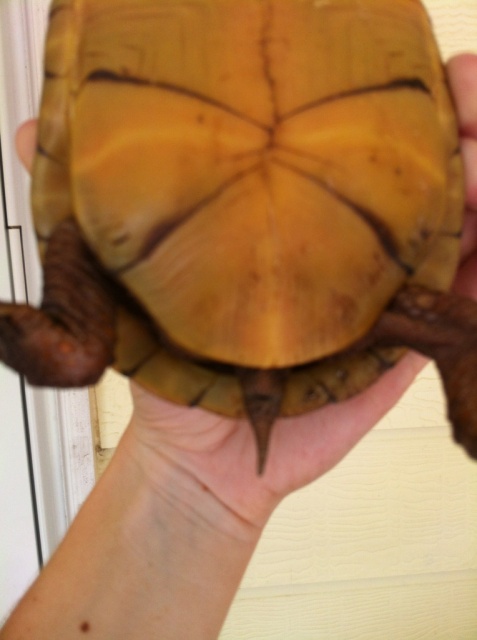 male or female box turtle?
Question
box turtle
Is this a male or female box
male or female box turtle?
Question
box turtle
Is this a male or female box
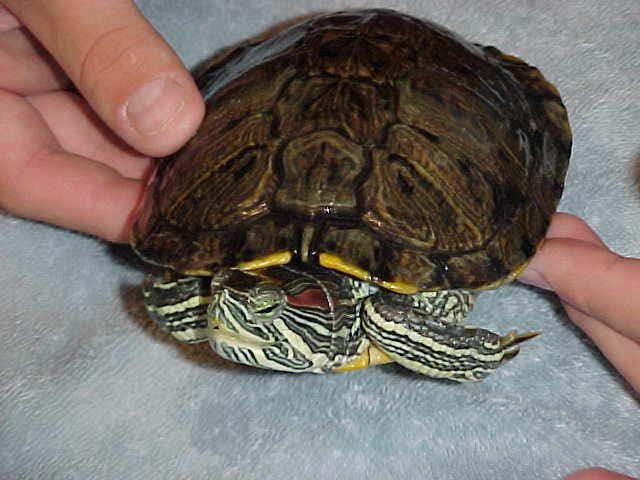 Species ID
Question
Red eared turtle Red eared Turtle
Species ID
Question
Red eared turtle Red eared Turtle
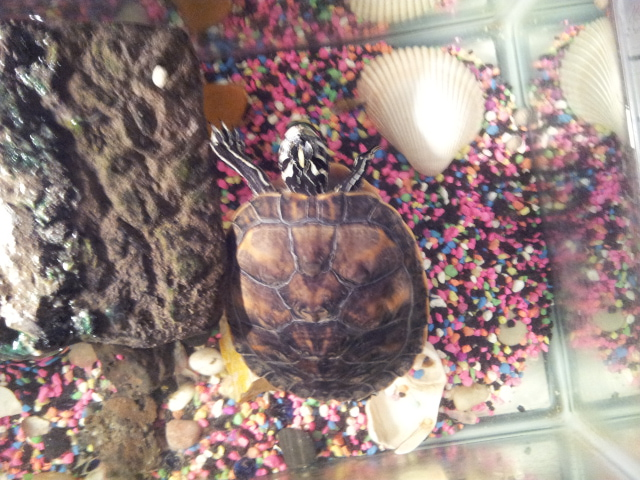 Painted turtle house pet issue
QuestionQUESTION: Our pet turtle that was found in our
Painted turtle house pet issue
QuestionQUESTION: Our pet turtle that was found in our
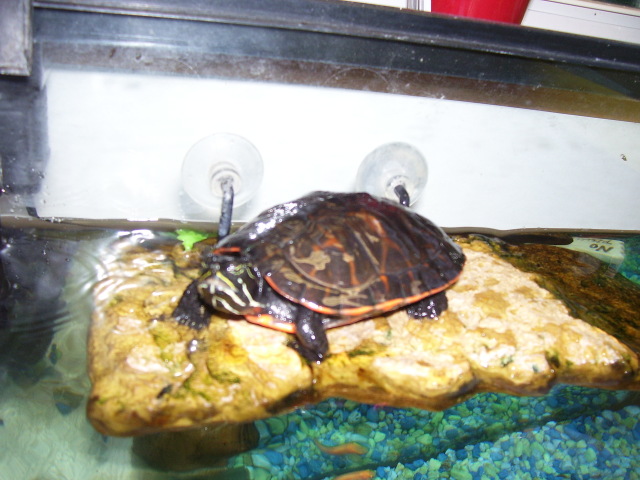 Painter Turtle
QuestionMy turtle
QUESTION: Hello,Ive had my pai
Painter Turtle
QuestionMy turtle
QUESTION: Hello,Ive had my pai
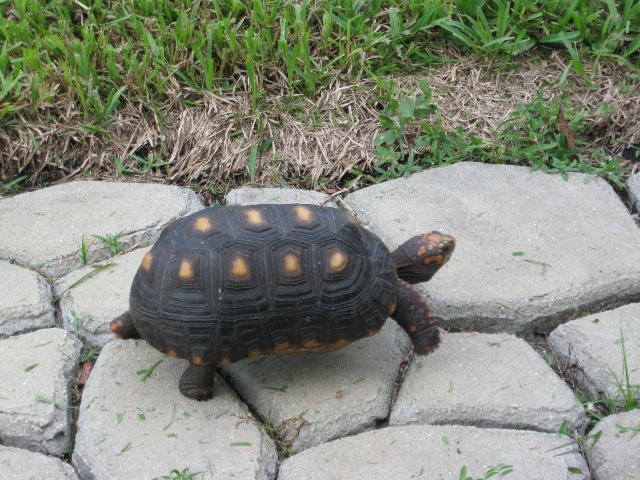 What kind of turtle?
Question
Turtle 1
I was mowing the lawn on Friday and
What kind of turtle?
Question
Turtle 1
I was mowing the lawn on Friday and